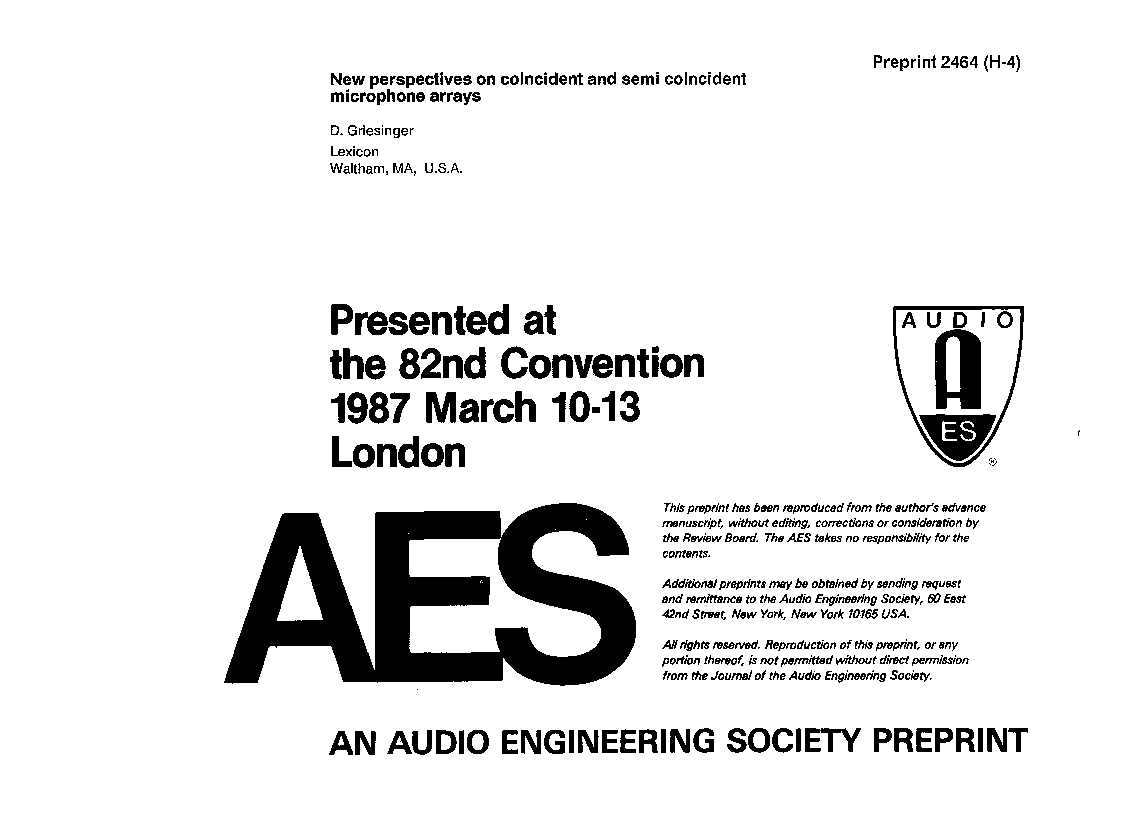Home / Publications / E-library page
You are currently logged in as an
Institutional Subscriber.
If you would like to logout,
please click on the button below.
Home / Publications / E-library page
Only AES members and Institutional Journal Subscribers can download
Research into loudspeaker stereo has shown that spaciousness, depths, and directional accuracy depend on factors that can be easily calculated for a particular recording technique. Factors such as the time and level differences between the channels, and the correlation of the reflected energy, can be combined with information about typical playback rooms to predict how a given overhead microphone technique will perform. We find it is in general not possible to meet all the requirements of an ideal technique without employing either non-standard microphone patterns, independent equalization of the L-R and L+R signals (spatial equalization,) or both. Since small time delays do not provide directional information below about 500Hz, techniques which separate the microphones by small distances require additional compensation. With spatial equalization coincident and semi coincident techniques can make recordings of high quality. This is a paper about loudspeaker stereo. I will examine the spatial properties of various microphone techniques with the explicit expectation that they will be played back for the most part through loudspeakers in various positions in a relatively small room (about 40 cubic meters.) Spatial information at low frequencies is perceived quite differently in larger rooms, and entirely differently in earphones.
Author (s): Griesinger, David
Affiliation:
Lexicon, Waltham, MA,
(See document for exact affiliation information.)
AES Convention: 82
Paper Number:2464
Publication Date:
1987-03-06
Import into BibTeX
Session subject:
Microphones and Recording
Permalink: https://aes2.org/publications/elibrary-page/?id=4965
(697KB)
Click to purchase paper as a non-member or login as an AES member. If your company or school subscribes to the E-Library then switch to the institutional version. If you are not an AES member Join the AES. If you need to check your member status, login to the Member Portal.

Griesinger, David; 1987; New Perspectives on Coincident and Semi Coincident Microphone Arrays [PDF]; Lexicon, Waltham, MA,; Paper 2464; Available from: https://aes2.org/publications/elibrary-page/?id=4965
Griesinger, David; New Perspectives on Coincident and Semi Coincident Microphone Arrays [PDF]; Lexicon, Waltham, MA,; Paper 2464; 1987 Available: https://aes2.org/publications/elibrary-page/?id=4965